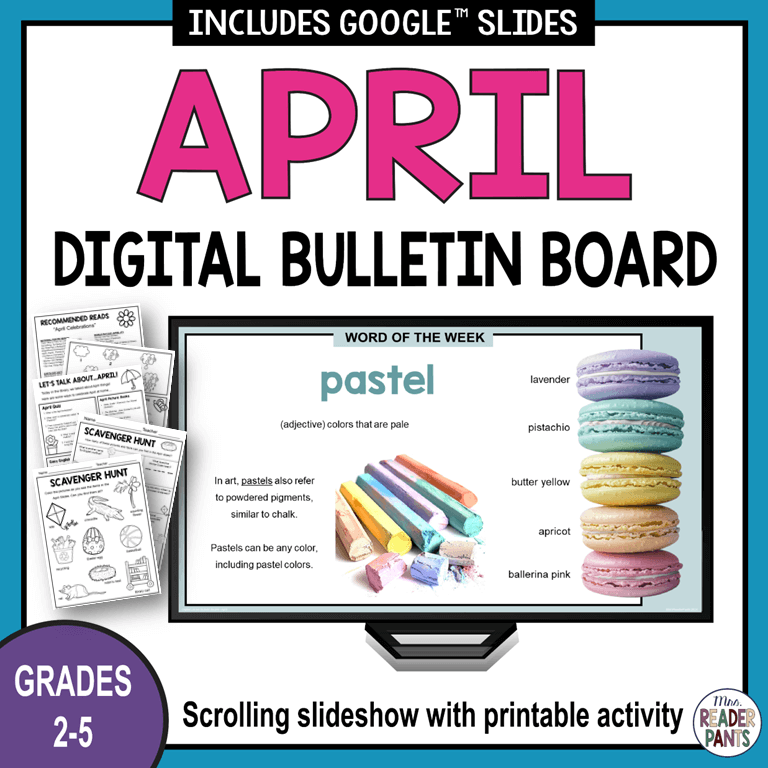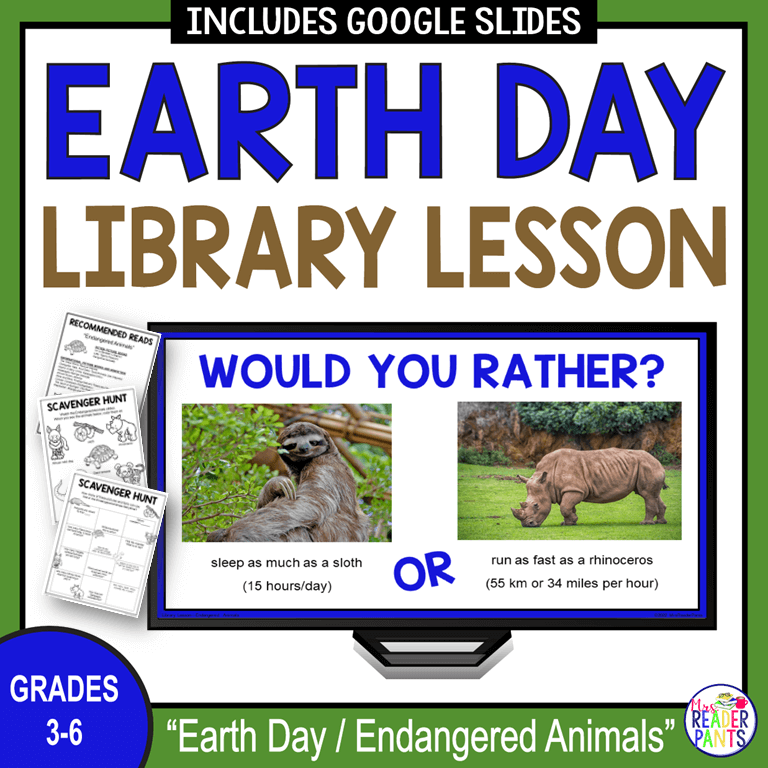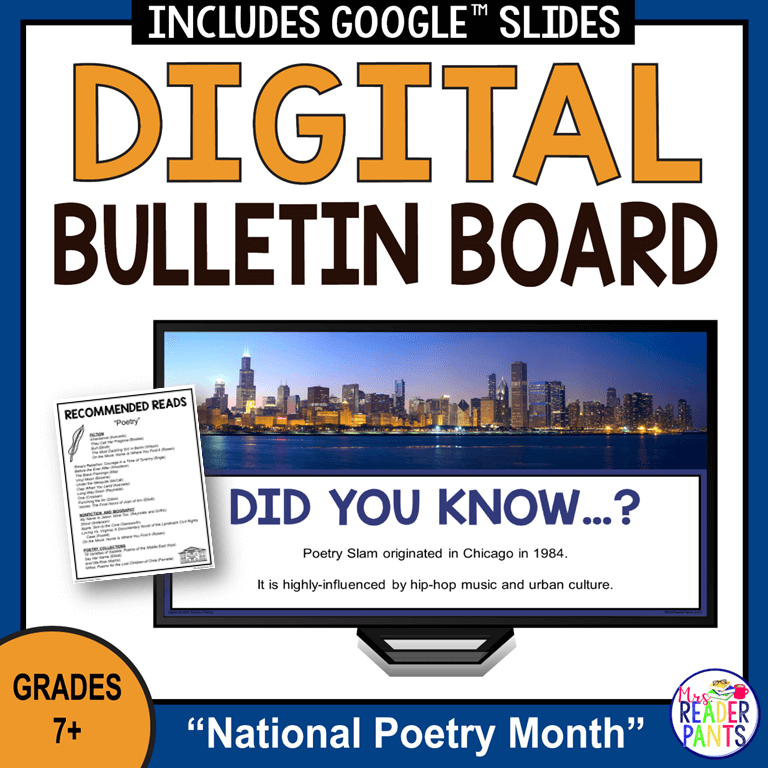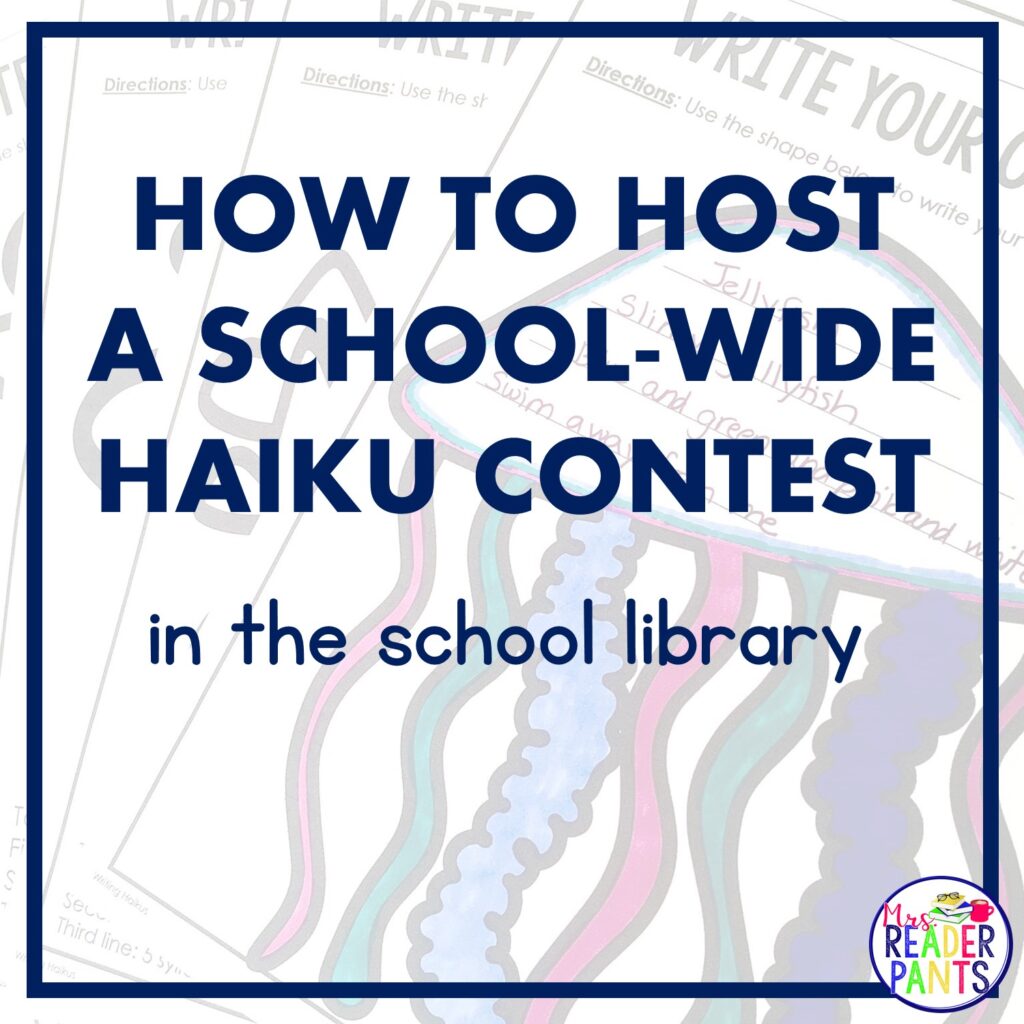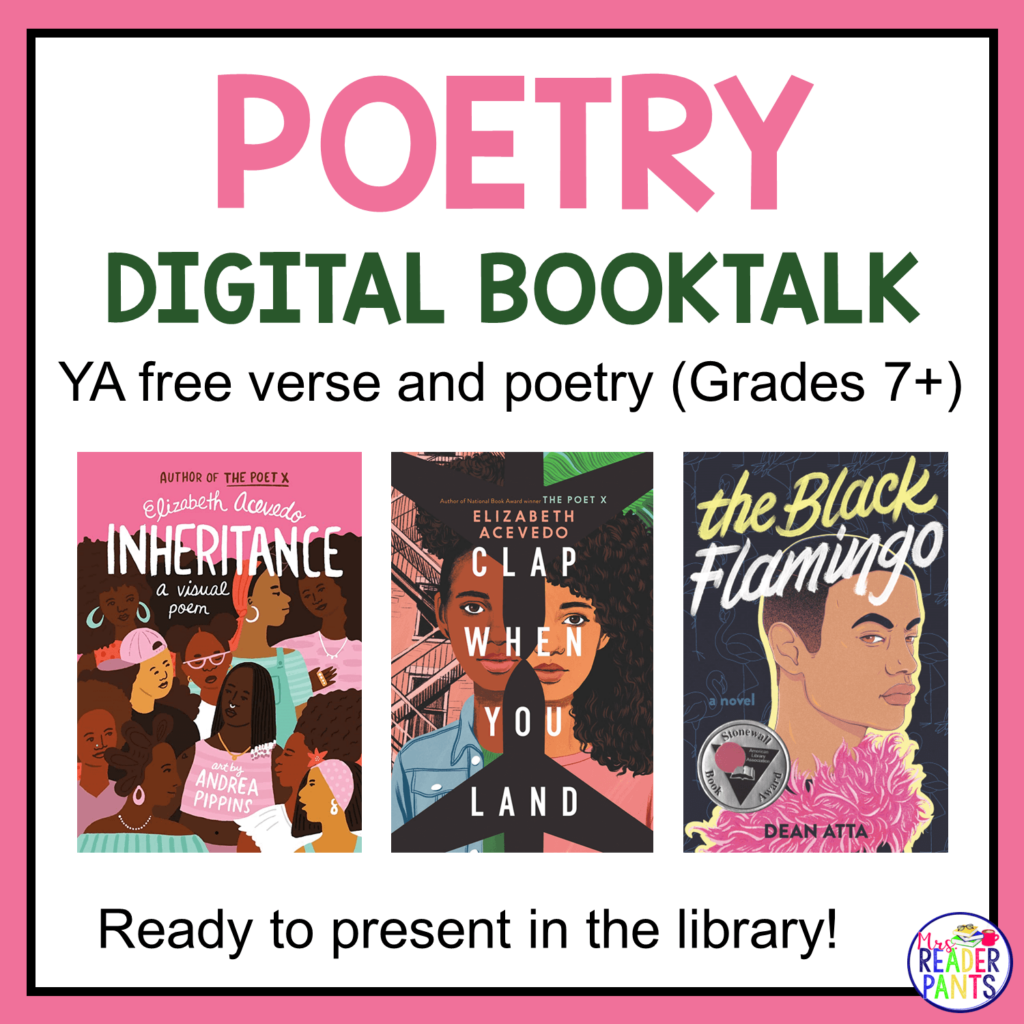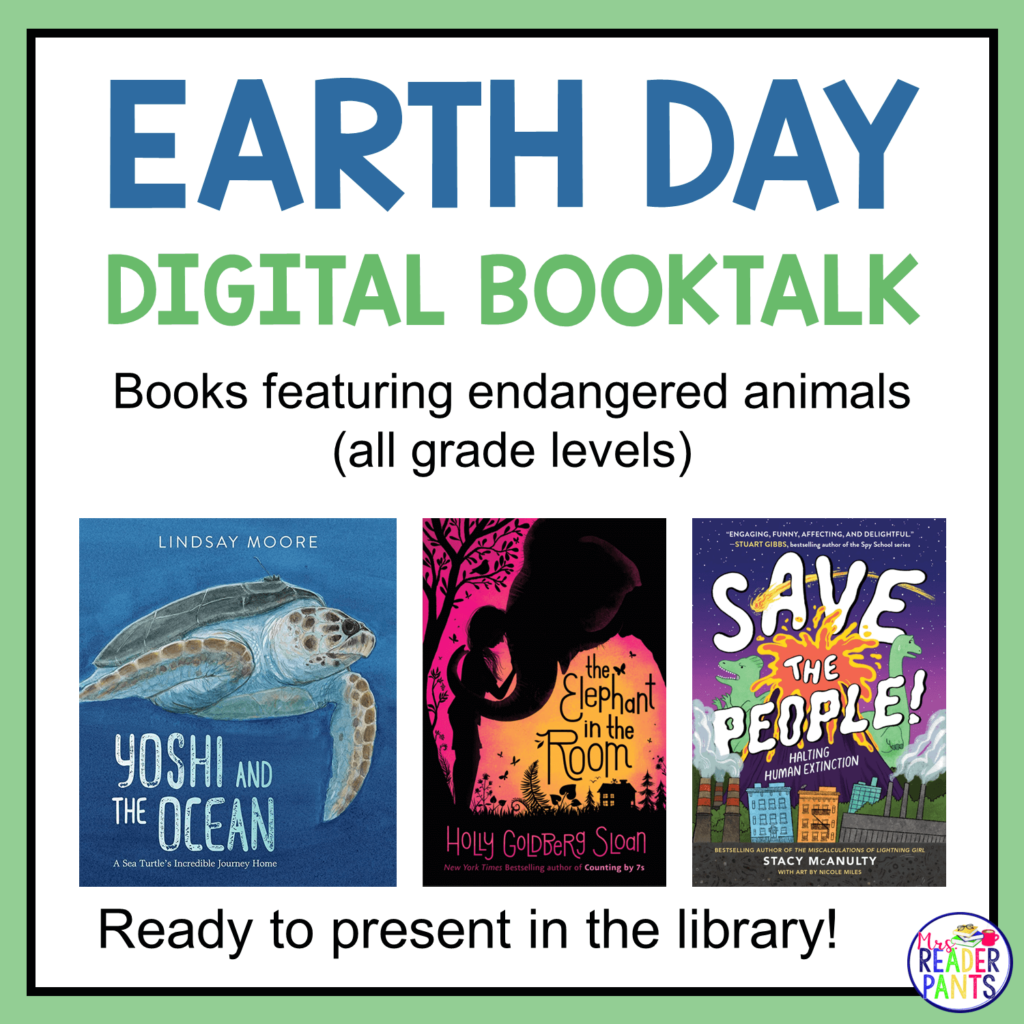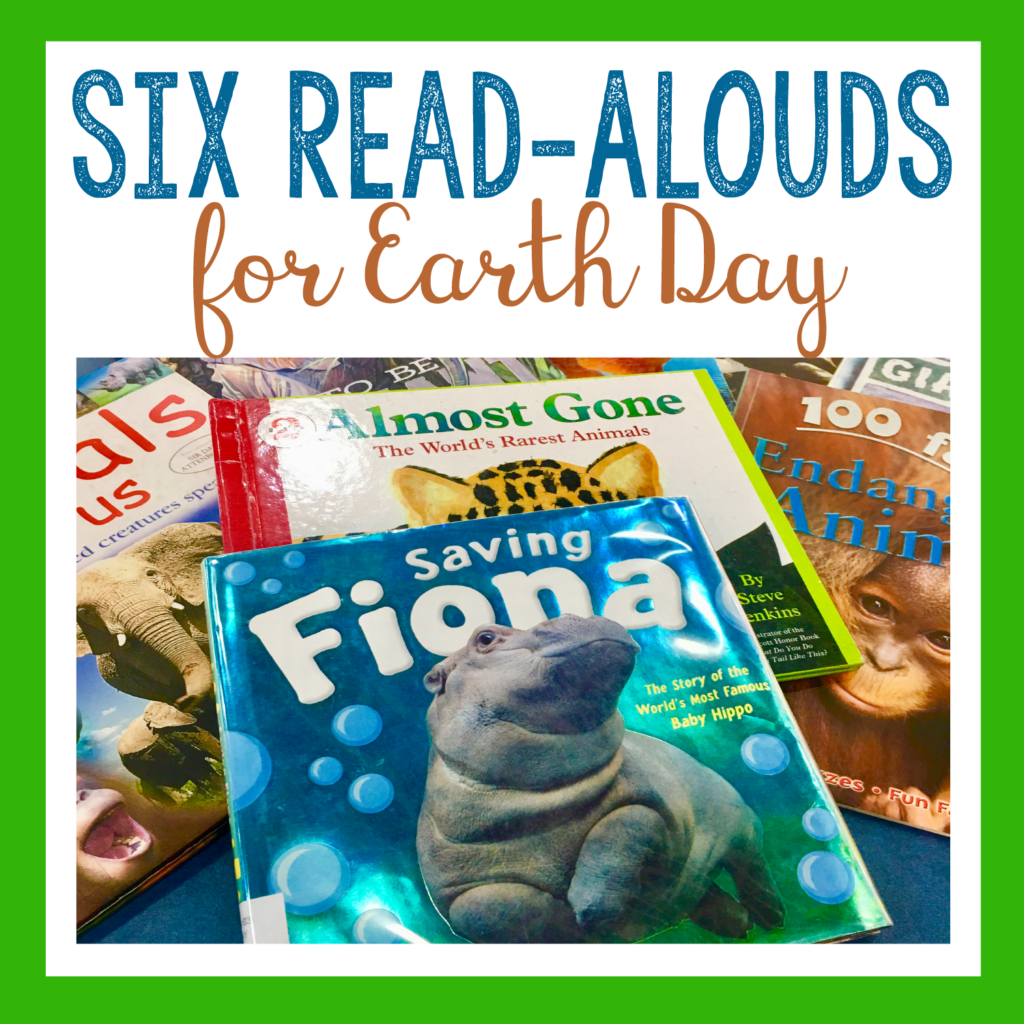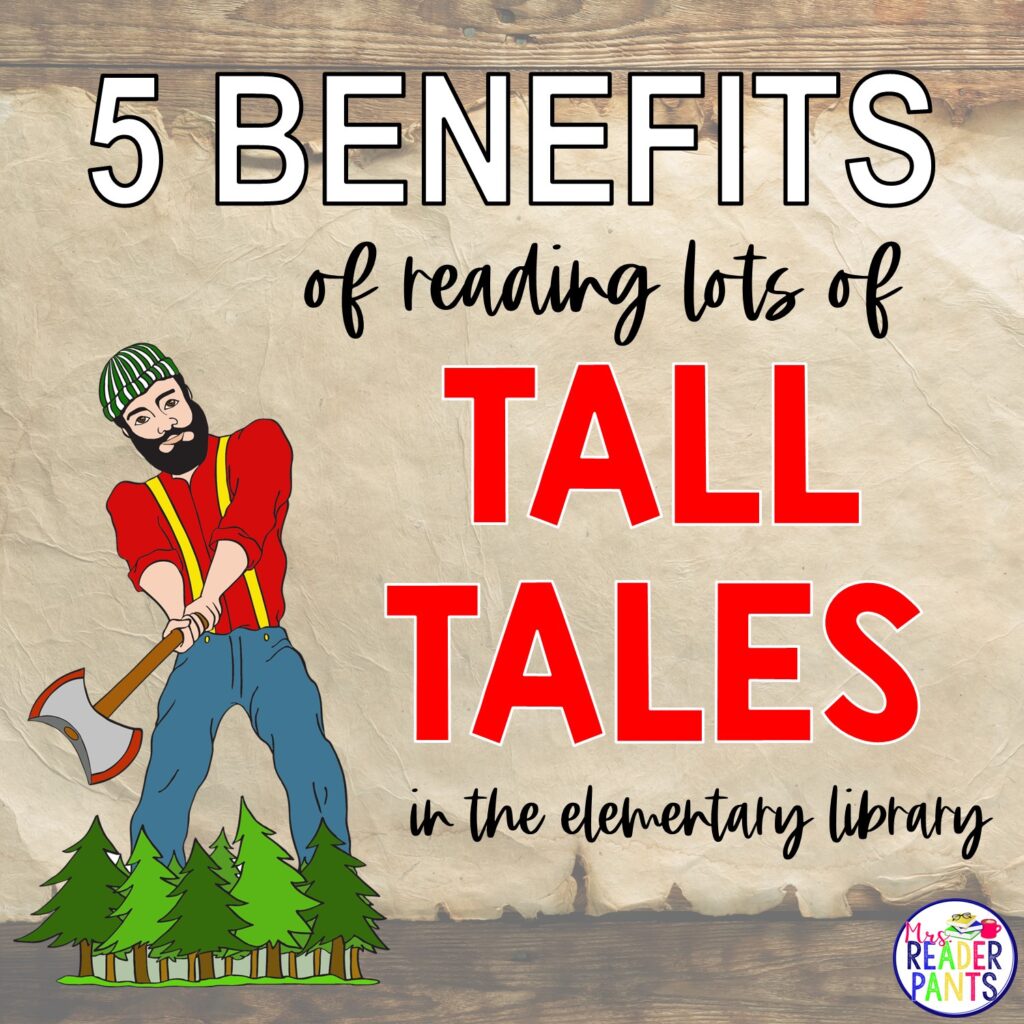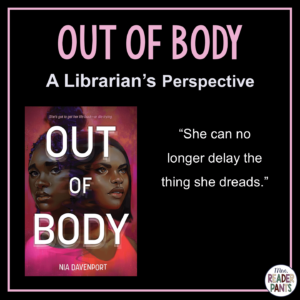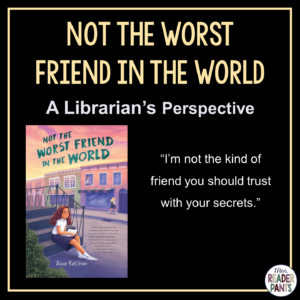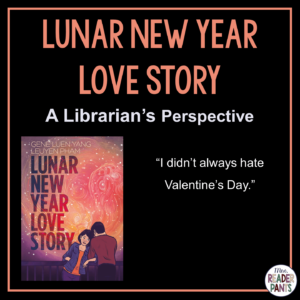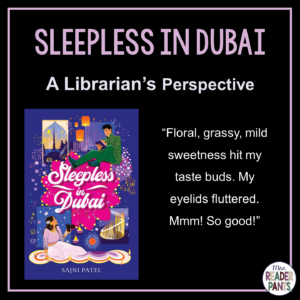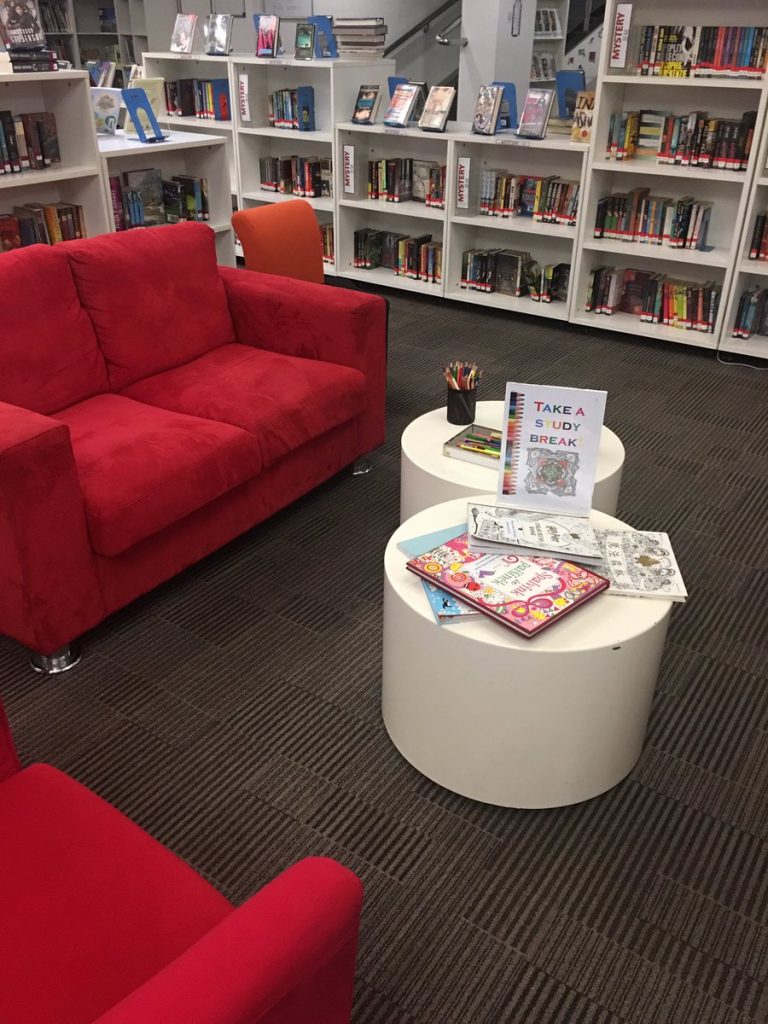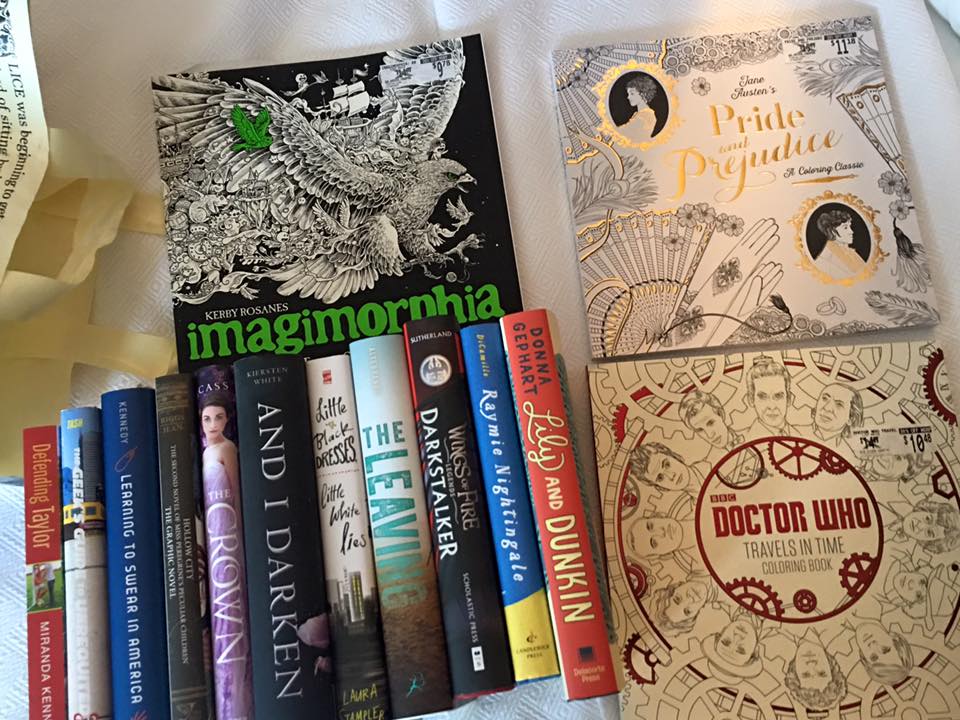![]()

Why does every librarian need fresh ideas for library centers? Let’s see if this sounds familiar…
It’s nearly Christmas break, and you are on your last leg. There simply isn’t enough coffee in the world to keep you going every day. Though you started so fresh in August, you are desperately dragging yourself up to the finish line of Christmas holidays. You’re almost there…
But as exciting as the holiday break is, you know that in two weeks, you have to come back. And that first day back in January is a killer. It’s cold, dreary, and there is not much to look forward to except the possibility of a snow day. Once you go back in January, you will be counting the long weeks before spring break. And even before you leave for Christmas break, you are already dreading it. You know January will be more of the same: piles and piles of unshelved books, rushed laminating orders, lessons to plan, behavior to manage, overdue books to chase up, and don’t forget those god-awful standardized tests to monitor…
I truly hope that doesn’t sound familiar, but I’m betting for many of you, it does. How do I know this? Hon, I have been there. January is THE WORST. Years ago, I dubbed the first day back to school in January as “The Worst Day of the Year.” Things have definitely improved for me the longer I teach, but yeah, that’s still my pet name for January-the-whateverth.
I have a challenge for you over the holiday break: make a plan to make it better. If you are already feeling anxious about January, perhaps it is time for a change. One that makes your students more independent and frees up some of your time. So you can breathe. So you can relax a bit and enjoy your kids. So you can pee during the school day.
Here’s the plan: start the new year with a new, easy-on-you plan for library centers. Students will love the autonomy, and you will love the minimal prep and more peaceful library time.
![]()
MY DAILY SCHEDULE
Before I became a middle school librarian, I was an elementary librarian “on the rotation.” And it was hard. Really, really hard. I was VERY lucky at the time and had a full-time library assistant, but that is no longer in place at my former school. All the assistants in our district got cut in 2011, and the positions have not been restored.
To give you an idea of my schedule (and how similar it probably is to yours), here’s a glimpse of my daily schedule:
| Before school | The library was open as an option for all 2nd-5th graders. We were a POPULAR option, with maybe 60 or students in the library on any given day. Once they chose the library, they were expected to stay there. Checkout was only allowed in the last 10 minutes; from 7:30-7:50, students were supposed to find a book and read quietly. |
| 7:50-8:45 | Open checkout. This was also considered my (non-existent, completely useless) planning time. I also had to laminate all items for all teachers in the building, shelve books, and help students, teachers, and parents who came in for checkout. |
| 8:50-11:30 | I saw 5th grade, 4th grade, and 3rd grade for 50 minutes each, with 5 minutes in between each class. The third grade group was extra-large, so I had about 32 students in all my third grade classes. The rest of the classes had about 25 students. |
| 11:30-12:00 | Lunch. I wolfed down my lunch and attempted to shelve a few books before the Kindergarteners came in. My aide had lunch duty at this time, which meant she took her lunch while I had Kindergarten in the library. |
| 12:00-2:40 | Kindergarten, then first grade, then second grade in 50-minute increments with 5-minutes in between. Kinders and second grade classes had about 20-22 students. Like third grade, first grade was also doubled-up for specials, so I had about 27-30 students in my first grade classes. |
| 2:40-3:00 | Mad shelving party. I barely made a dent. |
| 3:00-3:15 | School ended at 3:00, and I had bus duty after school. |
| 3:15-4:30 | Mad shelving party, meetings, helping teachers and parents with checkouts, dealing with random students whose parents were “somewhere” in the building, getting ready for tomorrow. I could have stayed until midnight and still not finished, but I had to leave by 4:40 to pick up my children from daycare. |
And so it went, 5 days a week.
![]()
THE ROUTINE AND WHY IT DIDN’T WORK
As I’m sure many of you know, this schedule was really, really tough. My routine with the little ones (K-2) was a 30-minute storytime and a 20-minute checkout and read quietly. I quickly discovered that the “read quietly” part didn’t work so well as I had hoped. Before long, “read quietly” became a longer storytime or library lesson, translating into more planning for me.
The older students (grades 3-5) had a 20-30 minute library skills lesson, booktalk, or read-aloud. They then had 20-30 minutes to check out and read quietly. Again, “reading quietly” meant different things for different students. No matter the age group, for some students, “read quietly” meant chat with your friends, play hide-and-seek in the stacks, jump into the beanbags, ask for a restroom break, or generally wander around aimlessly. Nothing I did seemed to help much with behavior at this time. If I didn’t fully entertain the students for the full library lesson, some classes devolved into chaos.
By the end of the first semester, I was completely D.O.N.E. I was seriously considering going back into the middle school classroom as an English teacher. At least as a teacher, I had the same students–my kids–every day. I could train them with consistent classroom expectations and, when necessary, meetings with parents. My students would know me, and I would know them. Some days were full-on, but other days were more relaxed. Sometimes, the students had tests or days where they worked on projects. I wasn’t “on” constantly. Plus, I had my English Department and the 7th grade team behind me when I needed them. I didn’t have to entertain every single minute of every single day. I knew all my students’ names by the end of the first week. Classroom teaching wasn’t perfect, but it was most definitely less frazzled.
As a librarian, every minute of every day was full-on. I felt like I was shot out of a cannon every morning, only to land somewhere near my bed (or the couch) by 9pm. As a mom of a baby and a preschooler on top of it all, I felt disorganized, overwhelmed, and utterly EXHAUSTED. I didn’t even have time to stop and have a good cry. Something had to give.
![]()
TIME FOR A CHANGE
Over Christmas holidays that year, I came up with a new plan. I needed students to be much more independent. I needed time to shelve a few books throughout my day. I needed lessons and activities that my students could do without my constant supervision. We all needed structure and routine.
Enter centers! When I look back on that year, and I truly believe centers changed my library life. It is quite possible that implementing centers got me through that school year with my sanity intact. The students caught on quickly, and I never did go back to teaching middle school (though I did become a middle school librarian the first chance I got).
![]()
WHAT ARE CENTERS?
Centers are very common in elementary classrooms. I have seen elementary teachers who picked up their students from library time, and when they say the class was going back to do centers, the kids were so excited. My own kids love centers. Centers are great for giving students freedom of choice and exploration. Best of all, they take minimal set-up on the teacher’s part.
Below is a list of centers I have used with elementary and middle school students. Middle school centers look a bit different since I do not see the classes every week. In middle school, my centers are for before and after school, as well as during our students’ break and lunch times.
At my previous elementary school, we had six 6-week grading periods, so I changed out the centers every six weeks. I had two groups of centers: upper-elementary (grades 3-5) and lower-elementary (grades K-2). Some of the centers were the same, and some needed to be switched out at lunchtime for my little ones in the afternoon. The little ones were assigned to a different center each week. I put students into groups of four, and students had the choice of their assigned weekly center or independent reading time. I did have to be very clear about independent reading time actually being spent reading. If your library is large, it may help to move the beanbag chairs into one area of the library for the little ones so you can better monitor them.
Older students were allowed to choose centers freely. As with the little ones, independent reading was always a center choice.
For all ages, once a center was chosen, the students were expected to stay in the center for the remainder of library time. If they finished their center early, their only choice was independent reading.
![]()
IDEAS FOR LIBRARY CENTERS: EASY-TO-LEARN TABLETOP GAMES
If you get six games, you can rotate them into the game station every six weeks. I got most of my library games through parent donations and yard sales. PTA might also be willing to help you with purchasing games for your library. Games are great because they are inexpensive and relatively durable.
 Jenga is easy to learn but challenging to play. Students can play with 2-4 players, or they can play in teams. There is also Giant Jenga for extra-giant fun, but since this version is hardwood, I would say it’s better for middle school than elementary. There are also many variations online (like this one) where you can write things on the blocks to make alternate versions of Jenga.
Jenga is easy to learn but challenging to play. Students can play with 2-4 players, or they can play in teams. There is also Giant Jenga for extra-giant fun, but since this version is hardwood, I would say it’s better for middle school than elementary. There are also many variations online (like this one) where you can write things on the blocks to make alternate versions of Jenga.

Connect Four is great for all ages, and many of your students will know how to play. Even if they have never played before, the game is easy to learn, and it’s always a hit with students.

Giant Checkers! This reminds me of those giant Checkers games at Cracker Barrell!
There are tons of tabletop games available! Here are some others that are both educational and fun:
| Yahtzee | A classic that never gets old. We’ve played this with our boys for years, since they were maybe seven or eight. They love it! |
| Apples to Apples Junior | I’ve never played this one, but the Amazon reviews are very high. Ages 9+. |
| Trouble | Looking for something with less pieces to keep up with? Try this one! I’ve played Trouble at least 987 times in my life, both as a kid and as a parent. Always fun! |
| Guess Who? | Another game with very few pieces to manage. And another one that I played as a kid and as a parent! How cool is that? |
| Harry Potter Trivial Pursuit | My middle schoolers would go bonkers over this game! I definitely need to invest in one when I come home this summer. |
![]()
PUZZLES
 |
We bought this exact set of Tangrams for my son when he was about 3 or 4 years old. He LOVED them and completed the tangrams regularly up to about age 9. What an investment! |
 |
Rush Hour is another game my puzzle-loving son played regularly for years and years! This does have some pieces to keep up with, but the game comes with a storage bag and a little drawer for the cards. It’s small and great for travel! |
![]()
INDEPENDENT READING CENTER

Because I had enough bean bags and floor rockers for every student, this center was always open to anyone who wanted to do it. On any given day, up to half of a class might choose this center. The main rule I had for the independent reading center was that students had to be actually reading if they were sitting in a beanbag or on a floor rocker. If they were chatting, they had to choose a different center for that day. Students were also allowed to read aloud with a friend as long as they read relatively quietly.
![]()
COLORING CENTER

These are very easy to maintain, but you will need to switch out the coloring books or sheets each week. Switch it up by rotating coloring bookmarks, different coloring books, dot-to-dots, and color-by-number. I’ve found that just covering the table with a huge sheet of butcher paper is fun for the students. Or, you could try some giant coloring pages.

Older students love coloring, too! Thanks to the adult coloring book craze, there are tons of great YA-themed coloring books. I have several in my library: Dr. Who, Harry Potter, Pride and Prejudice, and Throne of Glass. I also have general geometric patterns and this gorgeous steampunk-inspired line art. I want to get the Lunar Chronicles and Red Queen coloring books, too. Also, check out this Tattoo coloring book!
![]()
WORD GAMES

Bananagrams is kind of like Scrabble without a game board. It’s great because the game board can be a bit tedious for little hands, and it’s easy for the Scrabble tiles to shift on the board. Clean-up is a snap with the banana-shaped zippered cloth pouch. For younger students, try Appletters, Pairsinpairs, or My First Bananagrams.

Silly Sentences is great for PreK and Kinders. Students use the cards to make up silly sentences. Each of the 124 cards is color-coded by part of speech (green=verb), so this game could also be used to teach grammar.

A classic that my personal kids just played tonight! I really love the switch to eco-friendly whiteboards in this version.
![]()
MAZES

This maze book is better for younger students; according to the publisher, it’s targeted to PreK-3rd grade.

This 48-page book of mazes is better for older students or adults who want challenging mazes.
![]()
DOT-TO-DOTS
 |
This dot-to-dot book also contains color-by-number and mazes. Ages 4-8.. |
 |
Extreme Dot-to-Dot! My 9-year old nephew absolutely loves these things! These are not the dot-to-dots we remember from school; they go up to 1000 dots or more. Great for older kids; frustrating for the little ones. |
![]()
GROUP DISCUSSION OR WRITING PROMPTS
 |
What Do You Stand For?–This is a card Game for ages 7+. Created by a teacher, each card features a different “what would you do?” scenario for discussion or writing prompts. Personally, I would cover a table with white butcher paper and put out some colored pens. Students could write their responses on the butcher paper, and other students could read and respond. |
![]()
CARD GAMES
 |
Math War Card Games. Because anything that will help with learning multiplication tables is going to make you a rockstar. Your math teachers will love you and bring you chocolate and coffee if you can help with the multiplication tables. Especially the 6s and 7s. |
 |
We have played Uno as a family for years! Great for upper-elementary, and you will probably have some students who can teach the others how to play. Ages 8+. |
![]()
STEM CONNECTIONS
 |
Snap Circuits and Snap Circuits Junior is like LEGOs meets electricity. Students can follow the instructions to create 101 different projects, or they can try to create their own circuit boards. Ages 8+. |

Makey-Makeys are super-cool, but they will require some instruction on your part. Basically, you can connect the Makey-Makey to any object, and it will function as a touchpad. For example, you can turn library books into piano keys. There are lots of videos online on how to use these.
More about Makey-Makey–Show this video to your students, and let them figure it out!
MICROSCOPE STATION
 |
If you are lucky, you might be able to score a microscope or two from your school’s science lab. It doesn’t hurt to ask, right? And even if you can’t have one permanently, perhaps you could borrow one or two of them for a couple of weeks while they are not in-use. Don’t forget to ask for slides, too! |
![]()
MAGNET STATION

Super Magnet Lab. I can remember being in fourth grade and being obsessed with our classroom magnet kit. I loved pushing the bars around by putting the like-sides together, and I remember trying to build magnet towers with all those little magnet chips. This kit has 124 pieces, so you’ll definitely want to have an easy-to-use clean up system for the magnets. You might also want to talk to students about the dangers of ingesting magnets. Manufacturer suggests ages 5+, but the students should be old enough to not put magnets into their mouths. I’m not sure I would use this with students younger than about second grade.
![]()
PRISMS
 |
Playing with prisms is another activity I remember from elementary school. I loved playing with rainbows! This set contains six prisms of different shapes and sizes. |
![]()
IPAD APPS

Does your library have ipads? If so, the ipads make a GREAT center! There are so many apps to choose from, and whatever you use them for, the iPad Apps center will be very popular with your students. I personally love the FirstNews app (a school-wide subscription to the website and app downloads). We just got FirstNews this year, and it’s been a huge hit with our elementary and middle school students and teachers. We use it every day! I also wrote an article about FirstNews videos here (the videos are free, even if you don’t buy the app).
There are lots of websites that list apps for schools. Try:
iPad Apps for Middle School
Best 1-to-1 iPad Apps for Elementary.
![]()
LISTENING CENTERS

I personally prefer Follett playaways or digital audiobooks via OverDrive or Follett to the big listening center sets, but I also know many schools may have these listening centers available in the library. If you use these, you will also need audio CDs to play. Playaways and digital audiobooks are great though because students can check them out and listen at home.
![]()

